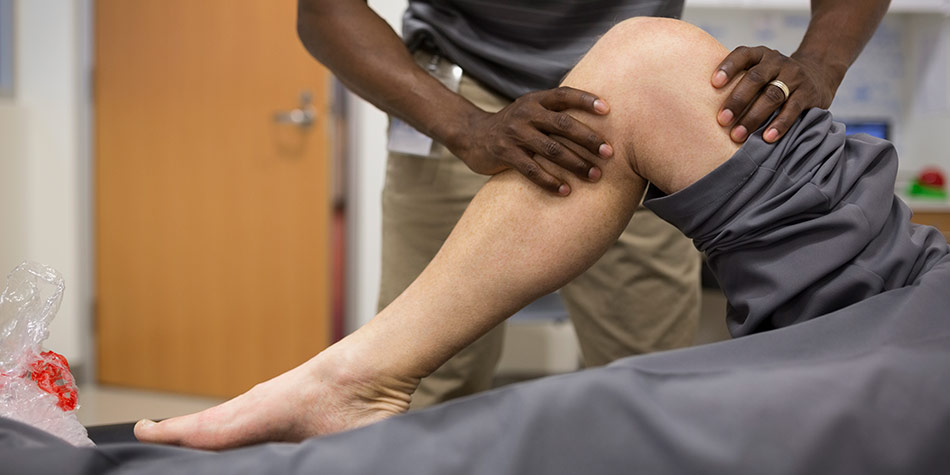
After a long, tiring day, all you want to do is sit down. Exercise? It’s the last thing on your mind. But if you have joint pain, the right kind of exercise can help relieve it.
You might not know where to start, and you don’t want to make things worse. So which exercises should you do, and which should you avoid? A rehabilitation plan or physical therapy can provide movements proven to reduce your pain and increase your mobility.
How exercise helps joint pain
If your joints feel stiff or painful, you might be tempted to avoid exercising. After all, the more you move, the more likely you’ll feel pain. Walking or going to the gym can sound like the last thing you want to do. But the right type of exercise can actually help improve your joint health long term.
Exercise can increase your strength, flexibility and stability. For example, if you have knee pain, exercise can help strengthen the muscles around your knee. As your muscles become stronger, they take some extra pressure off your knee and reduce your pain.
If you’re having a hard time getting started or feel like the pain is too much, talk to your doctor before exercising. He or she can suggest activities that work with your specific diagnosis, lifestyle and current fitness level. Your doctor may also recommend physical rehabilitation (rehab).
What to expect from rehab
Physical rehabilitation (rehab) with a licensed physical therapist guiding your movements can be helpful if you’re recovering from an injury or surgery or if you have arthritis.
The physical therapist will start your first session with some tests to pinpoint your problem. They’ll also ask about your goals for recovery. Then, together, you’ll come up with a plan to get you moving again. The program will include stretches and exercises designed to address your specific type of pain. By following the plan during the visit and at home, you will build your strength. As you get stronger and the exercises become easier, your physical therapist will adjust your plan so you can keep improving.
You might experience some discomfort as you work through the sequences. But let your therapist know if you feel any severe pain. They can adjust your exercises to match your changing needs.
Making rehab and exercise easier
As you add more movement to your day, try using these tips to help you feel less pain.
- Go low impact. Biking, swimming, and elliptical machines are easier on your joints than running or jumping. These activities can be especially helpful if you have knee or hip pain.
- Heat things up. Before you start to exercise, warm up with a few minutes of light movement or by applying heat to stiff muscles and joints.
- Then cool things down. After you’ve been active, you can ice your joints or muscles to reduce inflammation.
If you’re ready to start moving again or want to discuss rehab, contact our free Consult-A-Nurse® service to speak with an RN who can help you find a physician to meet your health goals.